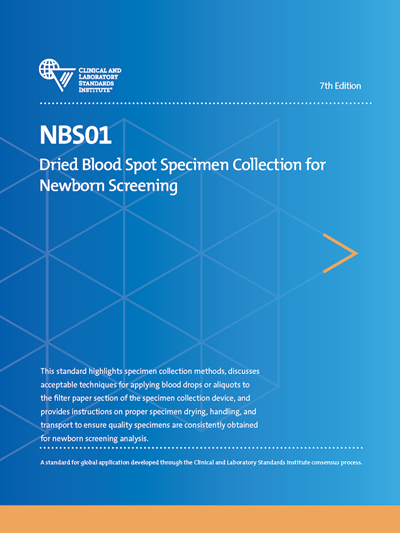CLSI NBS01
Dried Blood Spot Specimen Collection for Newborn Screening, 7th Edition
This standard highlights specimen collection methods, discusses acceptable techniques for applying blood drops or aliquots to the filter paper section of the specimen collection device, and provides instructions on proper specimen drying, handling, and transport to ensure quality specimens are consistently obtained for newborn screening analysis.
Member price:
List Price:Details
Chairholder: Victor R. De Jesús, PhD
Date of Publication: April 16, 2021
Order Code PDF: CLSI NBS01Ed7E
ISBN Number: 978-1-68440-109-3
Order Code Print: CLSI NBS01Ed7
ISBN Number: 978-1-68440-108-6
Edition: Seventh
Pages: 96
CLSI NBS01 Additional Details
A standard for global application developed through the Clinical and Laboratory Standards Institute consensus process.

